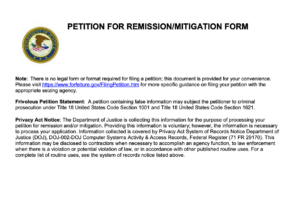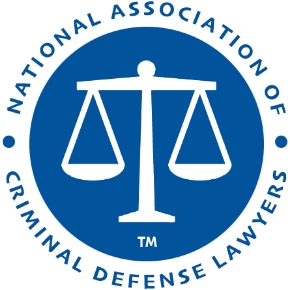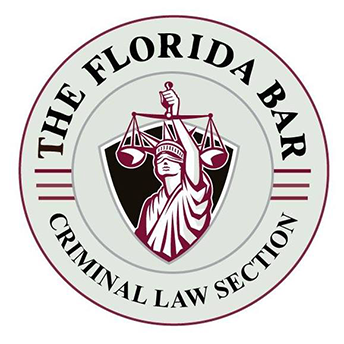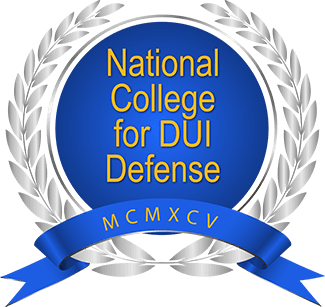Problems with Remission or Mitigation
If your cash was seized by a federal law enforcement agent, you must decide whether to file a petition for remission or mitigation or a claim for court action. If you want to get the money back quickly, this article explains when it is better to file a claim for court action.
At Sammis Law Firm, our civil asset forfeiture attorneys represent individuals after a federal agent seizes their money or other valuable property. Attorneys across the country also contact us to act as co-counsel as they fight for the return of their client’s money. Federal agencies that seize money might include CBP, DEA, ATF, FBI, IRS, or the U.S. Secret Service USSS).
After your property or currency is seized, you should hire an attorney to file a verified claim for court action (sometimes called “early judicial intervention”). For most people, it makes no sense to forgo those rights by requesting administrative remedies of remission or mitigation.
The ONLY way to challenge the legality of the seizure is to file a verified claim demanding judicial referral for court action.
Act quickly because the verified claim must be received by the agency (in their hands) before the deadline listed in the notice of seizure. If you miss the deadline by one day, the government will forfeit your property.
Federal agencies take a “hide the ball” approach by encouraging people to file a petition for remission or mitigation. That petition has the effect of waiving any rights to contest the seizure for forfeiture.
If you petition for remission or mitigation, the Ruling Official does not even consider whether the evidence was sufficient for forfeiture, but presumes that the forfeiture was valid. 28 C.F.R. § 9.5 (a) (4). See Juncaj v. United States, 894 F.Supp. 318, 320 (E. D. Mich. 1995).
In other words, if you decide to file a petition for remission or mitigation, you are effectively stipulating that the forfeiture was lawful and valid for administrative purposes.
The petition for remission or mitigation may NOT be used to challenge the sufficiency of the evidence to support the forfeiture or the actions of any government official. Instead, it presumes a lawful and valid forfeiture and asks the agency to invoke its power to “pardon” the property, in whole or in part.
If you file a petition, and the agency decides not to return any of your money, you have NO right to appeal that decision.
The federal agency that seized the property will argue that the only correct forum in which to challenge the legality or constitutionality of the forfeiture is the Federal District Court. As a result, if the petitioner fails to contest the forfeiture judicially, the option is no longer open. United States. v. Giraldo, 45 F.3d 509 (1st Cir. 1995).
Even more problematic is the fact that numerous downsides exist to forgoing the judicial action instead of filing a petition for remission or mitigation, including:
- the standard for remission is incredibly high;
- the petitioner has a heavy burden of providing sufficient documentation to prove a legitimate origin for the forfeited currency;
- the standards for probable cause to support the seizure is incredibly low;
- carrying large sums of currency is presumed to be “strong evidence” of narcotics trafficking;
- the agency will also consider an “alert” by a trained narcotics dog (even when no controlled substances were found and the alert was false); and
- the agency will consider the way the evidence is concealed to be evidence.
Remission and mitigation are administrative remedies for recovering property legally forfeited under either an administrative or a judicial proceeding. See 19 U.S.C. §§ 1613, 1618.
The granting of a remission or mitigation is entirely within the discretion of the government agency and is not subject to judicial review. If your petition fails to meet the requirements for remission or mitigation under 28 C.F.R. Part 9, then your petition will be quickly denied. Most petitions do not meet the minimum conditions for remission.
The petition may be examined to determine whether “extenuating circumstances” warrant mitigation of the forfeiture under 28 C.F.R. Section 9.5(b). Still, in the vast majority of these cases, the federal agency will find that the Petitioner has utterly failed to demonstrate any mitigating factors to support granting relief from forfeiture.
The federal agency might review the facts of the case to determine if the forfeiture would violate the U.S. Constitution’s Eighth Amendment prohibition against excessive punishment, as discussed in Austin v. United States, 113 S. Ct. 2801 (1993).
But in almost all of these cases, the federal agency will determine that the administrative forfeiture was entirely proportional to the offense, considering the substantial connections between the forfeiture property and the offense.
Attorney for Civil Asset Forfeiture Proceedings
The moral of the story? If a federal agency seized your cash, contact an experienced attorney about the benefits of demanding early judicial intervention in the U.S. District Court immediately after the seizure by filing a demand for court action.
You don’t have to wait for the notice of seizure to arrive in the mail before filing a claim. Filing a pre-notice claim often speeds up the process and ensures you are provided with a copy of the notice of seizure. To be safe, file a post-notice claim as well.
By filing the claim that demands court action, the case is taken away from the agency that seized the money and turned over to the Assistant United States Attorney (AUSA) in the asset forfeiture unit.
Once the verified claim for court action is filed, the AUSA has to decide whether to return 100% of the property or file a forfeiture action in the U.S. District Court.
It would help if you also talked with your attorney about the best way to secure any video surveillance evidence of the detention or seizure. The video is often the best way to PROVE that the detention was illegal from the inception or became unreasonably prolonged.
Before you decide, talk about the facts of your case in a confidential setting with an attorney experienced in filing and litigating a verified claim to:
- fight any Drug Enforcement Administration DEA forfeiture action;
- fight any Customs and Border Protection CBP forfeiture action; and
- fight any Homeland Security Investigations HSI forfeiture action.
We can represent the person involved in an illegal seizure or an innocent owner of the property taken by federal agents. Whether your currency was seized at the airport or during a routine traffic stop, we can help.
Let us help you understand how the process of federal civil asset forfeiture works and the best ways to protect your rights as you right for the return of your property.
Call 813-250-0500 today.
Benefits of Filing Claim Demanding Judicial Review
A petition for remission or mitigation cannot be used to challenge the sufficiency of the evidence to support the forfeiture or the actions of any government officials who seized the asset.
Instead, any petition for remission or mitigation presumes that a valid forfeiture occurred and asks the DEA to invoke its power to pardon the property, in whole or in part. A petitioner has no right to appeal the DEA’s decision.
By failing to file a claim to contest the forfeiture and by filing for remission or mitigation, you have waived any challenge to the seizure.
Once the government initiates an administrative forfeiture proceeding and the property is not the subject of an ongoing criminal proceeding, the district court loses jurisdiction to resolve the issue of the return of property.
In Malady Drugs and Pharmaceuticals, Ltd. v. Tandy, 522 F..3d 885, 889 (D.C. Cir. 2009), the court concluded that it would not grant judicial review of an administrative forfeiture where the claimant failed to avail itself of its right to have the case referred to the U.S. Attorneys Office.
Likewise, the court rejected the claimant’s assertion that the administrative forfeiture of property was valued more than $500,000 and found that assertion could not be heard by the district court where the claimant did not raise that objection with the seizing agency in the first instance.
In United States v. Shigemura, 664 F.3d 310, 312 ( 10th Cir. 2011), the district court lacked jurisdiction to review the merits of administrative forfeiture since the claimant did not file a claim.
Standards for Remission and Mitigation
Under 28 C.F.R. § 9.5(b), remission may only be granted if the claimant establishes that:
- he had “a valid good faith interest in the seized property;”
- he did not know of the property’s involvement in any violation of the law or of the property user’s criminal record; and
- he had taken all reasonable steps to prevent the illegal use of the property.
Mitigation may be granted where the minimum standards for remission are not met but “there are present other extenuating circumstances indicating that some relief should be granted to avoid extreme hardship” or where the minimum standards have been satisfied but “the overall circumstances are such that, in the opinion of the determining official, complete relief is not warranted.” 28 C.F.R. § 9.5(c).
The Standard for Remission is High
Another problem with pursuing an administrative claim for remission is that the standard for remission is high. Federal regulations explicitly prohibit remission of a forfeiture unless the petitioner establishes the following:
- A valid, good faith, and legally cognizable interest in the seized property as an owner or lienholder; and
- Qualification as an “innocent owner” within the meaning of the applicable civil forfeiture statute.
Keep in mind that the standards for probable cause to believe the seized currency was furnished for a controlled substance is low.
In these cases, the DEA will often allege that the investigation revealed probable cause exists to believe the seized currency was furnished or intended to be furnished in exchange for a controlled substance in violation of 21 U.S.C. §881(a)(6). See United States v. $93.685.61 In U.S. Currency, 730 F.2d 571 (9th Cir. 1984), cert. denied sub nom., Willis v. United States, 469 U.S. 831 (1984); United States v. $2,500 in U.S. Currency, 689 F.2d 10 (2d Cir. 1982), cert. denied, 465 U.S. 1099 (1984).
The Petitioner Has the Burden
The petitioner has the burden of establishing the basis for granting a petition for remission or mitigation of forfeited property. See Regulations Governing the Remission or Mitigation of Civil and Criminal Forfeiture, 28 C.F.R. § 9.5 (a) (3).
Under 19 U.S.C. § 1618, the Attorney General may return the property if he finds mitigating circumstances to justify the remission.
This means that the burden is on you to provide sufficient documentation showing a legitimate origin for the forfeited currency. In most of these cases, the DEA will allege that you failed to provide sufficient documentation showing a legitimate origin for the forfeited currency.
Under 28 C.F.R. § 9.3(c)(l)(iv), the interest of a Petitioner in the property, as owner or otherwise, must be supported by satisfactory documentary evidence, such as employment records, financial statements, bank statements, or canceled checks.
Suppose you are alleging the forfeited currency to be the proceeds of some transaction. In that case, you must then provide credible, verifiable documentation evidencing the transaction, such as bills of sale, contracts, deeds, or mortgages.
Large Sums of Currency are Presumed to be Evidence of Narcotics Trafficking
Any large sum of currency is presumed to be “strong evidence” of narcotics trafficking. “[T]he possession of a large sum of currency is strong evidence of narcotics trafficking.” United States v. $22,991.00, More or Less, in United States Currency, 227 F. Supp. 2d 1220, 1232; 2002 U.S. Dist. LEXIS 19343 (S. D. Ala. 2002); United States v. $42,500.00 United States Currency, 283 F.3d 977 (9th Cir. 2002).
For example, in United States v. $45,000.00 in U.S. Currency, 2012 WL 6680447 (D. Neb. Dec. 21 , 2012), the court found that carrying a large quantity of money, wrapped in rubber bands and concealed in vacuum-sealed bags, on an interstate highway is sufficient evidence of a connection to drug activity. See also United States v. $26,620.00 in U.S. Currency, 2006 WL 949938, *7-9 (N.D. Ga. 2006).
In fact, even carrying large quantities of cash is considered strong evidence. “The discovery of large quantities of cash alone is not sufficient to show a connection to illegal drug transactions, but it can be ‘strong evidence that the money was furnished or intended to be furnished in return for drugs’. United States v. $93,685.61 in U.S. Currency, 730 F.2d 571 , 572 (9th Cir.1984).
Evidence Can Be Established by a Trained Narcotics Dog
Believe it or not, the agent will use any alert by a trained narcotics dog as evidence to show the money or property is connected to drug trafficking.
In fact, if a dog alerted to the scent of controlled substances on the forfeited currency or its container, then the positive-trained drug canine alert for the presence of narcotics on the seized property is strong evidence of a relationship between the property and drug transactions. See United States v. $105,180 in U.S. Currency, CV-12-08122-PCT-DGC, 2013 WL 2153326 (D. Ariz. May 17, 2013).
A false positive alert to luggage that contains no found narcotics should carry little weight in court, particularly since marijuana is legal for recreational or medical use in most states.
The best way to attach the legality of a seizure involving an alert by a drug dog is to file a claim for court action, and if the AUSA files a complaint, file a judicial claim, answer, and motion to suppress evidence illegally seized.
Even the Way the Currency is Concealed is Evidence
The federal agency processing the request for remission or mitigation will consider the way the currency was concealed to be evidence.
For instance, traveling with large sums of cash banded by rubber bands and wrapped in several layers of plastic is not consistent with legitimate business activity.
In United States v. $124,700 in U.S. Currency, 458 F.3d 822, 826 (8th Cir.2006), the court “adopted the commonsense view that bundling and concealment of large amounts of currency, combined with other suspicious circumstances, supports a connection between money and drug trafficking.”
In United States v. $242,484.00, 389 F.3d 1149, 1160-61 (11th Cir.2004), the court acknowledged a “common sense reality of everyday life is that legitimate businesses do not transport large quantities of cash rubber-banded into bundles and stuffed into packages … because there are better, safer means of transporting cash if one is not trying to hide it from the authorities.” See also United States v. $119,030.00 in U.S. Currency, 5:11CV088, 2013 WL 3336624 (W.D. Va. July 2, 2013).
Problems with Filing a Petition for Remission or Mitigation
Although far less successful, some claimants decide to file a petition for remission or mitigation. By looking at the government’s figures, few of these petitions are successful. If you have a claim, the far better solution is to quickly file the verified claim for court action.
The problem with filing a petition for remission or mitigation is that the government must presume a valid forfeiture and shall not consider whether the evidence is sufficient to support the forfeiture.
The petition does not need to be made in any particular form and may be filed online or in writing. You should file a petition not later than 30 days after the date of final publication of this notice. See 28 C.F.R. Section 9.3(a).
Be aware that 18 U.S.C. § 983(h)(1) permits a court to impose a civil fine on anyone asserting an interest in property that the court determines was frivolous.
Nevertheless, it is possible for the government to “consider” granting petitions for remission or mitigation, which could pardon some or all of the property from the forfeiture. The petition for remission or mitigation must include:
- a description of your interest in the property supported by documentation;
- any facts you believe justify the return of the property;
- the petition must either be:
- signed under oath, subject to the penalty of perjury, or
- meet the requirements of an unsworn statement under penalty of perjury pursuant to 28 U.S.C. Section 1746.
For the regulations about remission or mitigation of the forfeiture, see 28 C.F.R. Sections 9.1 – 9.9.
Criteria for Remission of the Forfeiture
The criteria for remission of the forfeiture are found at 28 C.F.R. Section 9.5(a). Under subsection (1), the ruling official shall not grant remission of forfeiture unless the petitioner establishes that the petitioner has a valid, good faith, and legally cognizable interest in the seized property as owner or lienholder as defined in this part and is an innocent owner within the meaning of 18 U.S.C. 983(d)(2)(A) or 983(d)(3)(A).
Under subsection (2), the knowledge and responsibilities of a petitioner’s representative, agent, or employee are imputed to the petitioner where the representative, agent, or employee was acting in the course of his or her employment and in furtherance of the petitioner’s business.
Under subsection (3), the petitioner has the burden of establishing the basis for:
- granting a petition for remission or mitigation of forfeited property,
- a restoration of proceeds of sale or appraised value of the forfeited property, or
- a reconsideration of a denial of such a petition.
Failure to provide information or documents and to submit to interviews, as requested, may result in a denial of the petition.
Criteria for Mitigation of the Forfeiture
The criteria for mitigation of the forfeiture are found at 28 C.F.R. Section 9.5(b). The mitigation might be granted to a party not involved in the commission of the offense underlying forfeiture.
Mitigation might apply when the petitioner has not met the minimum conditions for remission, but the ruling official finds:
- that some relief should be granted to avoid extreme hardship, and
- that return of the property combined with the imposition of monetary or other conditions of mitigation in lieu of a complete forfeiture will promote the interest of justice and will not diminish the deterrent effect of the law.
Extenuating circumstances justifying such a finding include those circumstances that reduce the responsibility of the petitioner for:
- knowledge of the illegal activity;
- knowledge of the criminal record of a user of the property; or
- failure to take reasonable steps to prevent the illegal use or acquisition by another for some reason, such as reasonable fear of reprisal; or
- where the minimum standards for remission have been satisfied but the overall circumstances are such that, in the opinion of the ruling official, complete relief is not warranted.
Source and Use Documentation Regarding Petition for Relief
Unless it is established that the alleged violation did not occur, the government takes the position that any petition for remission or mitigation should include documentation that shows that there was a legitimate (lawful) source and intended use for the seized monetary instrument.
Examples of the types of documents which may be considered relevant in establishing a legitimate source and intended use are listed below. Examples (not all-inclusive) of documents that might be helpful in showing the source of currency/monetary instruments include;
- Documents showing employment history and pay statements for the past several years;
- Bank statements for the past several years;
- Note: bank statements are usually helpful only if they show a history of accumulation of funds over several years. but bank statements that cover a shorter period of time are usually not helpful;
- Copies of tax returns for the past several years;
- Documents showing inheritance receipts, sales of assets (such as real estate or valuable personal property), or gambling winnings; and
- Business records related to the currency/monetary instruments if the funds are owned by a business organization or if the claimant owns a business organization
Examples (not all-inclusive) of documents that might be helpful in showing the intended use of currency/monetary instruments include:
- Travel/vacation documents showing itinerary that would require substantial expenses;
- Business documents showing plans to purchase equipment, property, or services;
- Medical documents showing planned medical treatment that would require substantial expenses; and
- College/university documents showing planned study at college or university that would require substantial expenses.
Reconsideration of the Government’s Decision to Deny the Petition for Remission or Mitigation
When your petition is denied, your notice will disclose your right to request a reconsideration of this decision as provided by 28 C.F.R. § 9.3(j). Only one request for reconsideration shall be considered.
Any request for reconsideration must present a basis demonstrating that the denial is erroneous.
The agency might inform you that:
Requests must be postmarked or received by this office within ten (10) days of your receipt of this letter. If you elect to request reconsideration of this decision, you must include your referenced documentation establishing a legitimate origin for the seized currency.
This article was last updated on Wednesday, January 18, 2023.
















